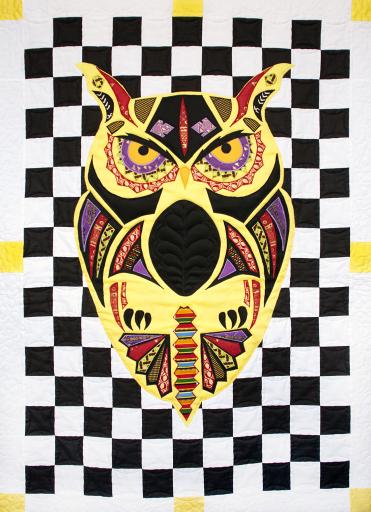The Owl, William Daniels
Artwork Overview

William Daniels, artist
born 1975
The Owl,
2017
Where object was made: United States
Material/technique: cotton; satin; poly-cotton; dyeing; appliqué; piecing; quilting
Credit line: Museum purchase: Peter T. Bohan Art Acquisition Fund. Image by Keena Gonzalez © 2018. All rights reserved.
Accession number: 2018.0159
Not on display
If you wish to reproduce this image, please submit an image request



